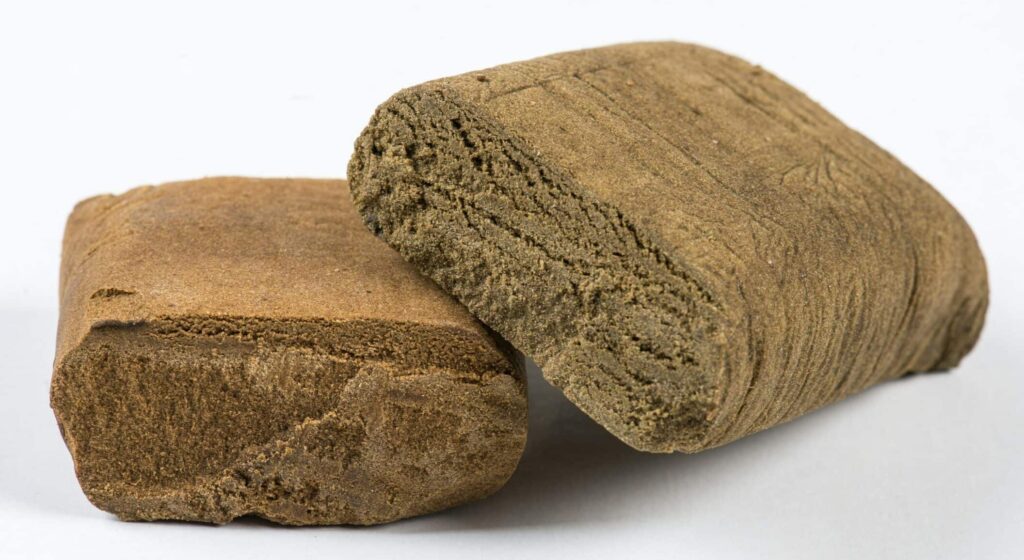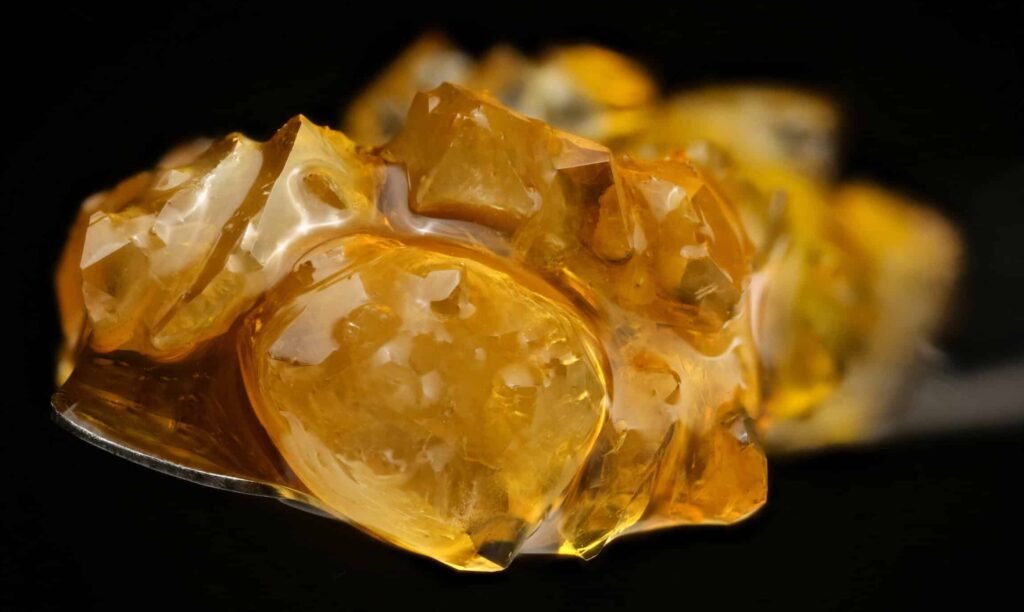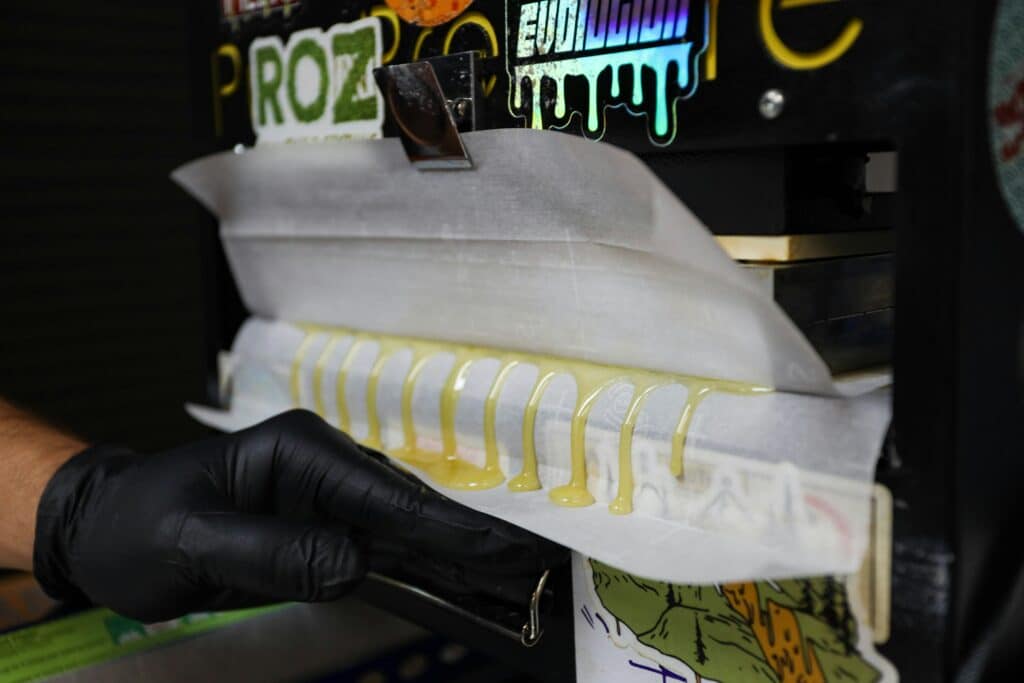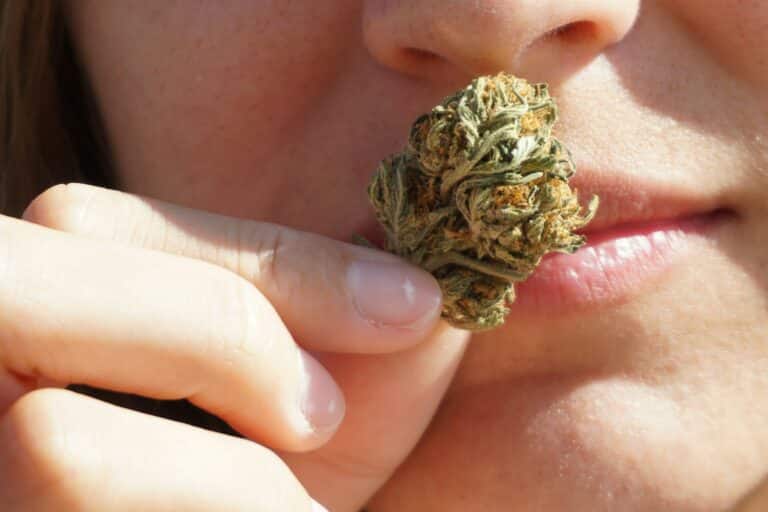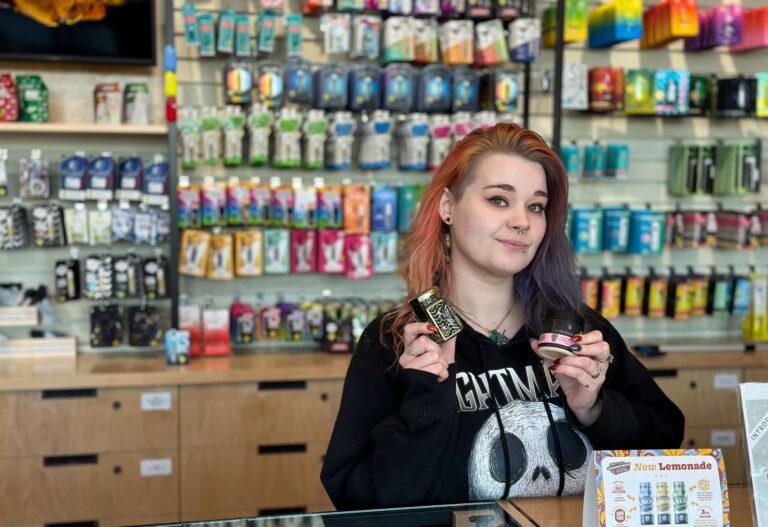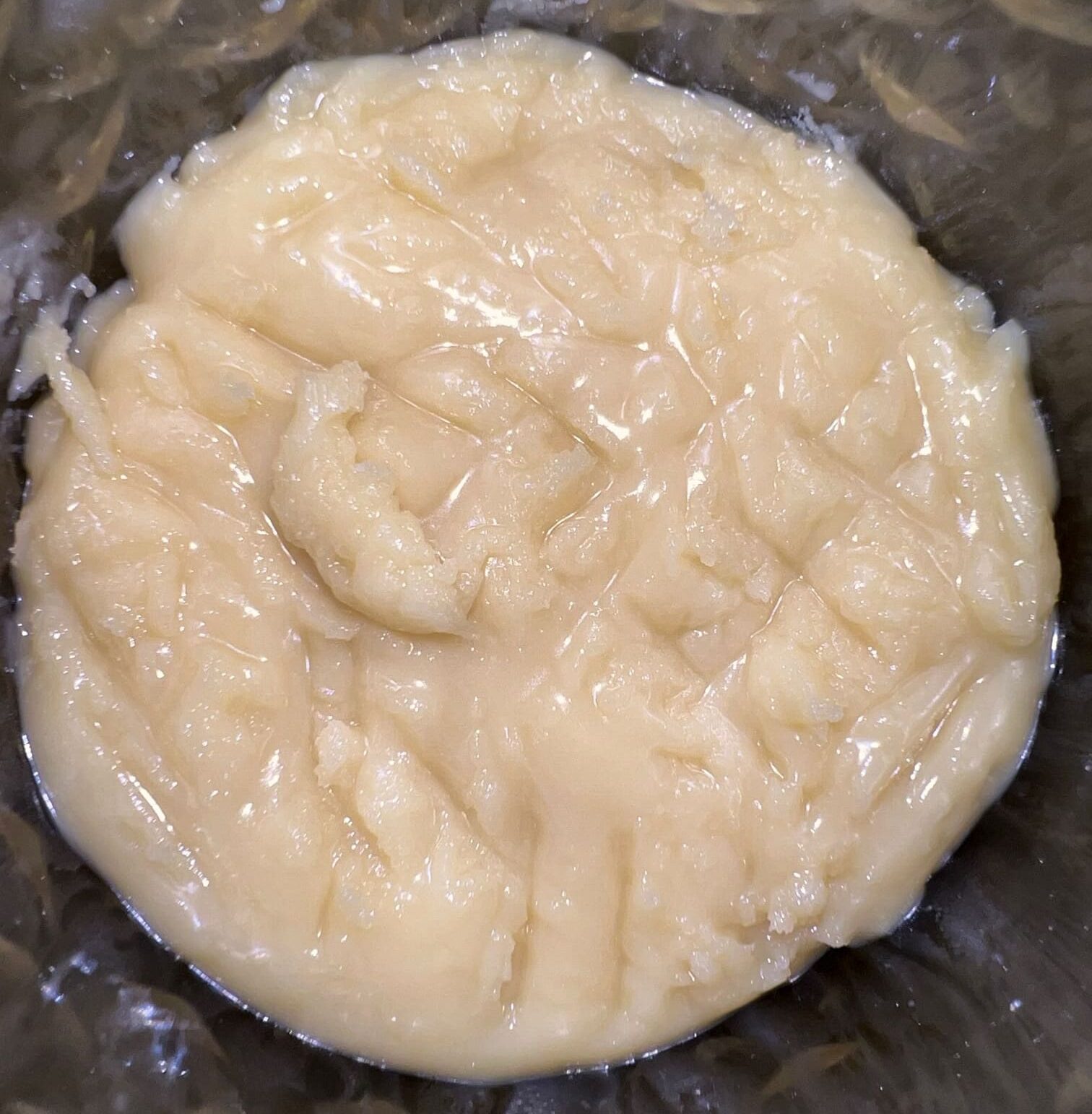
Posted on January 31st, 2024 to History
The subject of concentrates has become rather polarizing since their usage has increased with states legalizing cannabis. While the folks who are opposed to these products often assert that concentrates are a modern invention of the cannabis industry, the truth is that they’ve existed for hundreds if not thousands of years, but have simply taken on new forms in recent history. This is our guide to concentrates.
Hashish
A Brief History of Traditional Concentrates
The granddaddy of contemporary concentrates, hashish or “hash” is a traditional cannabis extract that’s made by dry sifting cannabis (either whole plant or just the leaves and stems) over silk screens, then pressing the kief into a solid shape. Hashish was more often used as an edible or as incense in its early days, with the first written record of hashish dating back to an Egyptian pamphlet from 1123 CE that referred to Nizari Muslims as “hashashins” (meaning “hashish eaters”), accusing them of using hashish to get in the mindset to commit murders (it’s believed that this is where the word “assassin” originated from). History is written by the victors, and there’s still no reliable evidence that the Nizaris even used hashish, so it’s possible that this pamphlet is one of the earliest forms of reefer madness propaganda.
If hashish is the granddaddy of contemporary concentrates, then charas is the great granddaddy. Believed to be thousands of years old (though the date of origin is still unclear), charas was used for religious and medicinal purposes in the Himalayan region of India, and is the earliest form of cannabis concentrate in human history. Charas is made by rubbing your hands on fresh cannabis flower and rolling the resin that sticks to your palms into a ball. If you’ve ever trimmed a bunch of weed and gotten resin all over your fingers and scissors, you’ve essentially made charas, though the big difference between “finger hash” and charas is that charas is made from live cannabis plants as opposed to ones that have been harvested and cured. Charas has never been commercially available in dispensaries.
Archeologists estimate that humans have been using cannabis for over 10,000 years, though the earliest evidence of smoking cannabis—wooden braziers with weed residue that were discovered in western China—dates back to 2,500 years ago (about 500 BCE). It is not clear when people began smoking hashish, but some believe it wasn’t until the 1600s. Even if it wasn’t [directly] being smoked prior to this, the argument can be made that the use of hashish as incense was still a passive form of inhalation, so maybe ancient peoples were smoking hash without realizing it.
In the late 1980’s a new form of hash emerged in North America known as bubble hash. The process for making bubble hash is to combine cannabis and ice water in a bucket that’s lined with a nylon bag (also known as a “bubble bag”), agitating it to separate the trichomes from the plant material, then sieving it through more nylon bags with increasingly smaller holes (measured in microns). Bubble hash is more potent than traditional pressed hash, and often has a powdery, almost kief-like consistency. It should also be noted that modern day ice wax is produced in the same way.
We know you probably didn’t come here for a history lesson, but it’s important to understand this context in order to fully appreciate the fact that we are now living in the golden age of concentrates.
Using Hashish
The effect of eating hash is actually quite enjoyable if you can get past the strange texture and the weedy/ floral flavor, but these days it’s much more common to smoke hash. Europeans most often consume cannabis by breaking it into small pieces, sprinkling it over tobacco, and smoking it like a cigarette, but in the United States it’s more common to consume hash with flower instead of tobacco. If your hash is hard, use a lighter to very briefly light a corner to soften it, then it will be easier to break up. We recommend sprinkling hash on top of a bowl of flower, or sprinkling it over flower before rolling it into a joint, or you can try the “snake in the grass method” where you use your palms to rub the hash into a narrow tube, then place it in the center of a joint before rolling it up. You can smoke hash by itself as well, but it may be a little underwhelming unless you have high quality pressed hash and a glass dome to smoke it out of.
The average price of classic hash at Washington dispensaries is about $25 to $40 a gram.
Some hash products we recommend are classic hash by American Hash Makers, and temple balls by Seattle Bubble Works.
Pros of Hashish
- The incredible “hashy” flavor that tastes and smells more like potpourri than skunk or diesel
- It has more of a “full spectrum” sort of effect compared to most modern concentrates
- It doesn’t necessarily require any additional paraphernalia
- It’s great for salvaging mediocre or low potency flower
- It’s how our ancestors consumed cannabis
Cons of Hashish
- It can be hard to find at dispensaries
- You can’t dab it, unless it’s high quality bubble hash or ice wax
BHO, Live Resin, & Other Hydrocarbon Concentrates
BHO (butane honey oil, or butane hash oil) is what most people think of when they hear “concentrates” or “dabs,” and it comes in a wide range of consistencies like wax, crumble, shatter, sauce, diamonds, and pull & snap. These concentrates utilize butane (or other hydrocarbons like hexane or propane) as a solvent, which is flushed through cannabis plant material to extract all the trichomes, then the solvent is fully purged so that only the high potency cannabis extract remains.
When it comes to flavor, BHO is often (but not always) regarded as the superior choice by many dab enthusiasts. In addition to being an express ticket to Flavor Country, butane extracts are relatively inexpensive to produce, and can be found at varying quality levels for an average price of $10 to $45 a gram. The price point, like with most any other product, is typically indicative of the quality level; more affordable concentrates are often produced using trim (leaves instead of buds), and higher price points may be due to a more refined extraction process or higher grade materials used. Live resin is the gold standard for high quality hydrocarbon extracts, and it’s made from plants that were flash frozen immediately after being harvested. Dabbers often prefer live resin to cured resin because it has a better flavor that is more true to the flower that was used.
Several years ago, you could tell why a concentrate commands a higher price point just by looking at its color, but the advent of color remediation correction (CRC) has made it so even budget dabs have a light color that’s pleasing to the eye instead of looking like brown sludge. CRC is a controversial practice that many extractors do not want to admit to or address, and this is an issue that regular dabbers are becoming concerned about.
The main drawback to BHO relates to concerns about how healthy it is to consume butane. Like any other subject you’ve ever Googled, there are loads of conflicting information pertaining to the safety of consuming butane, but we do know the following:
- Butane is a class three solvent, meaning it’s less toxic and regarded as lower risk to human health,
- extracts must test at <5,000ppm residual solvents per Washington state law, and
- the most serious effect of human exposure to 10,000ppm of butane is just drowsiness.
In a 2015 High Times article, Colorado biology professor Bob Melamede PhD was quoted as saying, “I looked through the National Library of Medicine database on this, and there isn’t any evidence that inhaling residual hydrocarbons like butane are dangerous—at least in small amounts. It’s an irritant, but that’s about it.” In 2021, SC Labs founder John Wurzer—whose lab tests cannabis products for residual solvents—was quoted as saying, “for what it’s worth, butane is relatively non-toxic.”
Some BHO products we recommend are live resin waxes by Gabriel, live resin dabs by Dabstract, and live resin disposables by Plaid Jacket.
Pros of BHO
- It’s affordable and easily accessible
- It’s considered to have the best flavor of any concentrate types
- It comes in a variety of consistencies, making it easy to find something that suits your specific tools or preferences
Cons of BHO
- Inhaling BHO may be more irritating for your lungs than other concentrate types
- Health risks associated with CRC are not currently known, and extractors are not currently required to disclose if they are using this process
Distillate
Colloquially referred to as “disty” or “hot dog water,” distillate is the most common type of concentrate you’ll find in vape cartridges and disposables. Distillate is a form of BHO that has been purified to the point that it becomes translucent and has a higher percentage of THC. While the process of turning crude concentrates into distillate is somewhat convoluted to explain, it’s not terribly different from the process of distilling grains into liquor using a still.
The distillation process fully activates the THC, but simultaneously boils out all the terpenes. This means that distillate can be eaten like an edible, and that the onset is quicker when inhaled, but it doesn’t have much of a flavor, and the effect is as boring as it is short-lived. Producers typically add terpenes– either from cannabis or other botanicals– to give distillate a little more character.
Distillate has a reputation for scaring the hell out of non-users because it has a THC potency around 90%, and because it is often sold in a syringe [because of its thick consistency]. Pair that with the fact that many dabbers use torches and bangers to vaporize concentrates, and you can understand why normies are often appalled and horrified by contemporary concentrates, prompting them to draw incorrect comparisons to hard drugs like crack cocaine. The average cost of distillate in Washington dispensaries is about $20 to $30 per gram, and we don’t know or care how that compares to the price of crack.
Some distillate products we recommend are mini split disposables by Ooowee, distillate applicators by Crystal Clear, and Twisted disposables by MFUSED.
Pros of Distillate
- It’s cheap as well as potent
- It can be used as an edible, and is great for making edibles as well
Cons of Distillate
- The effect is very short lived
- Extractors have to add terpenes to it to improve the flavor and effect
- Despite an intense onset, the overall effect is bland compared to other concentrates
CO2 Concentrates
Processed through an intimidating tangle of metal tubes and hoses, this procedure utilizes carbon dioxide as a non-toxic solvent for extracting cannabinoids and terpenes. Like distillate, CO2 extracts are more commonly used in cartridges than dab rigs, though these days you’ll hardly see any CO2 cartridges or concentrates in Washington dispensaries. In the early years of cannabis legalization, CO2 was an attractive option for novice cannabis users because the idea of using CO2 as a solvent understandably sounded a lot safer and healthier than blasting weed with butane. It’s not clear why CO2 is less common in Washington dispensaries at this point, but my guess is that the wider availability of solventless extracts (rosin) simultaneously appeals to concentrate connoisseurs and health conscious users alike, thereby making CO2 extracts dated and somewhat irrelevant.
The overall sentiment held by seasoned dabbers is that CO2 concentrates are almost never as tasty as BHO, and that it typically has a “medicine” flavor to it. If you can find it at a dispensary in dab form, CO2 concentrates almost always have a gel-like consistency. The THC in CO2 extracts becomes partially activated during the production process, so while it can be eaten like an edible, it’s only about a third as potent as eating distillate.
As of this writing, the only products we carry with CO2 are Avitas cartridges and disposables, and Dose Oil’s infused palm blunts and rose wrapped prerolls.
Pros of CO2
- No butane is used in its production
- More flavorful than raw distillate
Cons of CO2
- Less flavorful than BHO or live resin
- Often costs more than BHO
Rosin or Solventless Hash Oil (SHO) Concentrates
Better known as rosin, solventless hash oil (SHO) is the evolution of the traditional concentrates we discussed at the beginning of the article. Though it was very briefly made from resinous cannabis flower when it first arrived at medical dispensaries about 10 years ago, nowadays its standard practice to make rosin from bubble hash. On the surface, the process for making rosin is very straightforward: you simply put bubble hash in a fine micron bag to filter out plant material, place it in a rosin press, then use heat and pressure to squeeze out a flavorful and solventless extract that’s twice as potent as the input material.
The fact that rosin is produced without any solvents [other than water] is a trait that makes it especially attractive to novice consumers and seasoned connoisseurs alike; not only do you have peace of mind knowing there are no extraneous chemicals in your dabs, but you reap the benefits of using a full spectrum concentrate. Whereas other extraction techniques typically just retain THC (and trace amounts of other cannabinoids and terpenes), rosin retains the full spectrum of cannabinoids and terpenes and better preserves the effect and flavor of the strain. Some dabbers believe that rosin always has a superior flavor to butane extracts, though this sentiment is often disputed by BHO purists. This seems to be a matter of preference, though it should be noted that rosin often tastes more hashy or plant-like when compared against BHO. An especially delicious form of SHO is live rosin; as you may have already guessed, live rosin is rosin that is made from flash frozen buds.
It takes a lot of weed and a lot of time to produce SHO to scale, so the price of hash rosin at Washington dispensaries ranges from $30 to $75 per gram, with $60 being the median price point. Some rosin brands we recommend are Constellation Cannabis, Pacific and Pine, North Sound Solventless, and Select Cannabis Company.
Pros of Rosin
- No chemical solvents are used in its production
- Full spectrum flavor and effect
- You won’t cough as much compared to BHO
- No additives or adulterants; rosin producers don’t add botanical terpenes or CRC their oil
Cons of Rosin
- It’s expensive compared to BHO
- The flavor is more plant-like compared to BHO
There are so many perks, drawbacks, and varying levels of quality to consider when you’re getting into concentrates; for this reason, gatekeeping has become all too common in dab culture, which has made the product category that much more intimidating even among experienced cannabis users. At the end of the day, it doesn’t matter which cannabis products you enjoy, all that matters is that you enjoy cannabis products (I mean, it’s fine if you don’t enjoy cannabis products at all, but it’s kinda strange to read blogs on a dispensary website if that’s not your thing).
Thanks for taking the time to learn about concentrates with us! If you have any questions, stop by 210 Cannabis Co and ask them to our knowledgeable crew of budtenders.
About the Author
Ramsey Doudar has continuously worked in Washington’s cannabis industry for over 10 years, holding various positions that ranged from marketing strategist to inventory manager. He serves as the Marketing & Communications Coordinator for 210 Cannabis Co, and is also the founding member of a cannabis consumer advocacy group.
© 2024 210 Cannabis Co. All rights reserved.
Site by CannaPlanners
